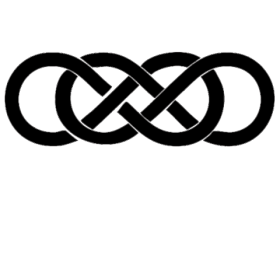 Ambling my way into the morning on the tail of the sunrise, I saw a neighbor sitting at the top of her flight of stairs. It was a lovely picture: she was surrounded by a garden of flowers cultivated on the landing, accompanied by her regal all-white cat, who was supervising her task and surveying the area. The woman was tying up a trash bag.
Ambling my way into the morning on the tail of the sunrise, I saw a neighbor sitting at the top of her flight of stairs. It was a lovely picture: she was surrounded by a garden of flowers cultivated on the landing, accompanied by her regal all-white cat, who was supervising her task and surveying the area. The woman was tying up a trash bag.
On another occasion, I had assisted this neighbor by carrying a package up the stairs for her, because I had seen her step-by-step inching first the package, then herself up. So, again, I asked if I could be of assistance.
She smiled at me, declined, and said, “Watch this.”
Gently she shoved the bag forward toward the stairs. Placed on a hard plastic liner, the trash bag swiftly tobogganed down the stairs and came to rest at my feet. We both laughed and appreciated the ingenuity.
Continuing my walk, I pondered. In what way am I facing a flight of stairs and stuck in a narrow approach to navigating them. How can I make things more effortless? What solutions would appear if I put aside the belief that I should do things on my own? Or by utilizing physical strength? Or other arbitrary limits?
This woman potentially began seeking new solutions only when her physical abilities diminished. And yet, we don’t have to wait. Not only do famous inventors have such creative abilities–we all do.
Two examples of this creativity, are my mother and one of my professors.
My mother loves to play ping pong. She is very energetic and agile, yet in anticipation of not being able to use her right hand, since she is “old” and might have to deal with injury, she switches up. Throughout a match, she will alternate, using her left hand now as adeptly as her right. This is one way in which she went past limitation. In addition, it is her way of stimulating the brain bilaterally. And, “Shhhhh!” Please don’t tell my nephew that he was only able to win when she used her left hand.
My professor joyfully proclaims his laziness and the fact that he did not graduate top of his class. He is a brilliant practitioner, and has a sharp mind, yet his take was different. He looked for systems within the body of knowledge to find explanations and gain understanding into principles, rather than beginning with rote memorization like his colleagues. Yes, memorization of some things is necessary, but he sought a framework within which to do so.
A few weeks ago, I attended his seminar on Two Opposites Theory. His laziness inspired him to see things differently–even in the field of Traditional Chinese Medicine, which has been around for thousands of years–and he developed a theory of understanding and treatment that is simple and effective.
Belief. Once again, it boils down to the belief–or not–in the perceived limitation. Are you willing to believe in another possibility? What do you have to lose? You might even navigate those stairs more easily.
~Sarina

